序章
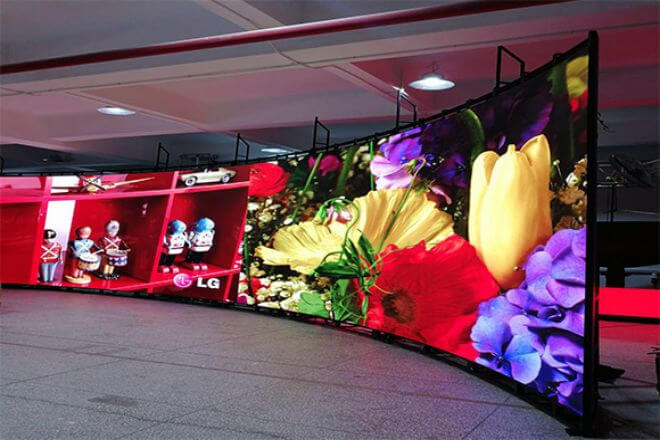
In the era of high-definition display, HDR technology has become the “new favorite” in the field of LED display screens with its excellent picture quality. However, there are endless “pseudo-HDR” products on the market, which are dazzling.
So, how can we judge whether the LEDスクリーン really supports HDR? This article will reveal the answer for you.
目次
1. What is HDR? Why does the LED display need it?
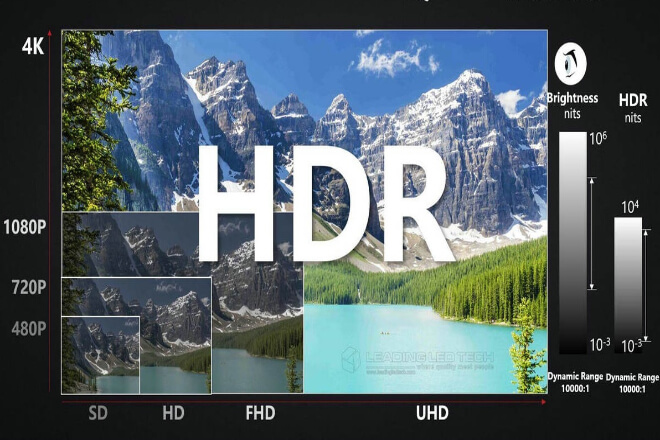
You may have heard of the word “HDR”, which often appears in the promotion of mobile phones, TVs, or photographic equipment. But what is it? In fact, HDR is the abbreviation of “High Dynamic Range”.
In layman’s terms, its function is to prevent the bright parts from being overexposed and the dark parts from being dead black, so that the picture is closer to the real world seen by the human eye.
Imagine that when you take a landscape photo with your mobile phone, the sky may be too bright and become white.
While the people under the shade of the tree are black. This is the “distortion” caused by insufficient dynamic range.
HDR technology is to solve this problem-it can retain more light and dark details, so that the picture is no longer “bright and blurry”, but clear, real, and layered.
1). Why is an LED display particularly suitable for HDR?
The LED screen itself has a natural advantage: high 輝度. This also makes it very suitable for combination with HDR technology.
When an LED screen is equipped with HDR, the picture is not only bright, but also more three-dimensional.
The bright place is no longer a dazzling white, but the layers of light and shadow can be seen; the dark place is no longer gray, but the details are clear and the transition is natural.
Especially in high-visual-impact occasions such as concerts, art 展示会, and press conferences, HDR can greatly enhance the expressiveness of LED screens.
The images that the audience sees are not just “brighter” but more “real”, making it easier to be attracted and immersed in them.
2. What are the common manifestations of pseudo-HDR LED display screens?
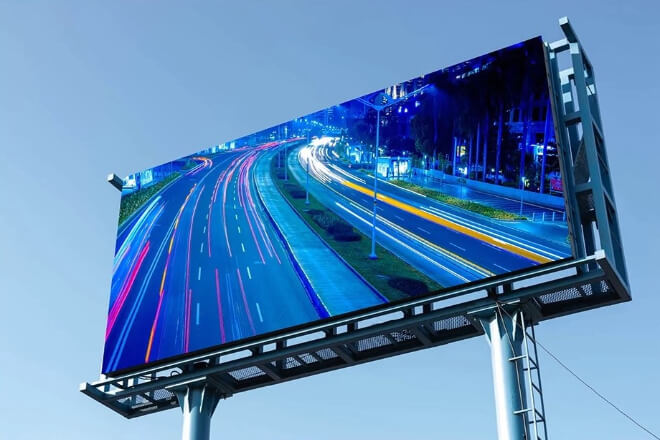
1). Although the 輝度 is high, there is no real dynamic range optimization
Pseudo-HDR screens often make the brightness very high, which looks very eye-catching, but in fact, it is just “bright” and has not adjusted the brightness and dark contrast.
In short, the bright places are very bright, and the dark places are black, without details and layers.
In this way, the picture will feel monotonous and without texture after watching it for a long time.
2). The color is too exaggerated, and the picture is easy to overexpose
This kind of screen often makes the color very “bright”; sometimes, it is too bright, and the color overflow occurs.
Especially in bright places, it is easy to “explode white” into a mass that looks dazzling and unnatural.
You will feel weird when you look at it, which is far inferior to the soft and delicate feeling of real HDR.
3). There is no real HDR decoding capability, but they boast that they support HDR
Some manufacturers in the market like to talk about “supporting HDR”, but in fact, their screens have no ability to decode HDR signals at all.
This is like an ordinary photo saying that it is 4K high-definition, but it looks almost the same as an ordinary photo.
Real HDR playback requires both hardware and software support to show the desired effect.
4). Use the “simulated HDR” algorithm to cheat visual effects
In order to look a bit like HDR, some LED screens will use software algorithms to “simulate HDR”.
This method actually makes some “fake moves” on the screen to make people feel that the picture quality is better.
But this simulation can easily cause unnatural halos, false colors, or even flickering on the screen, which makes people feel weird and unreal.
In summary, the pseudo-HDR LED screen may look bright and cool, but it is actually far from the real HDR picture quality.
When buying a screen, don’t just look at the brightness and publicity, but carefully understand whether it is real HDR.
So that you can buy a display with good picture quality and a great experience.
3. 6 technical standards for judging "true HDR LED display"
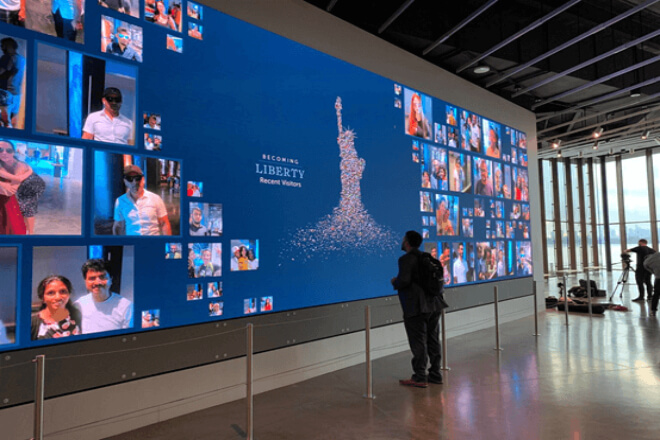
Although professional equipment is not easy to get, buyers can also use a few simple “tricks” to make a preliminary identification.
Don’t just believe it when the merchant says “supports HDR”. The following 6 points can help you try quickly:
The peak brightness of a true HDR LED screen is generally above 1000 nits. You can find an environment with strong sunlight.
And turn on the screen to play HDR videos (such as HDR movie clips).
See if the screen is still clear and bright, and will not be “defeated” by ambient light. If the screen brightness is obviously not enough and the picture is dim, it may be fake HDR.
When playing dark scenes, observe whether the details in the black area can be seen clearly.
The dark part of a true HDR screen will not be completely black, but will have layers and details.
You can find HDR videos with shadows or night scenes, and look carefully to see if you can distinguish the outlines of objects in the dark.
True HDR supports a wide color gamut, and the colors are vivid but not exaggerated.
You can play colorful content to see if the red, blue, green, and other colors are full and natural, not too glaring or rigid.
If the colors look too bright or unrealistic, it may be pseudo-HDR.
Use a gradient color picture (such as the transition of the sky from light blue to dark blue) to see if the color changes on the screen are smooth, without obvious color banding or color jumps.
If the color discontinuity is obvious, it means that the color depth is not enough, and it is probably not 10-bit true HDR.
You can directly ask the seller: “Does this screen support HDR10, HDR10+, or Dolby Vision?”
Real HDR screens usually have clear certification or standard support. If the other party can’t answer or only says “support HDR”, it is probably just a gimmick.
Play HDR videos with light and dark changes, and observe whether the screen brightness and contrast are flexibly adjusted with the changes in the picture.
For example, when the picture suddenly changes from dark to bright, will the screen appear glaringly white.
Or will it completely lose details when it changes from bright to dark? If the picture is always “unchanged”, it can basically be determined that it is not dynamic HDR.
4. From which parameters and tests can the authenticity of HDR be verified?
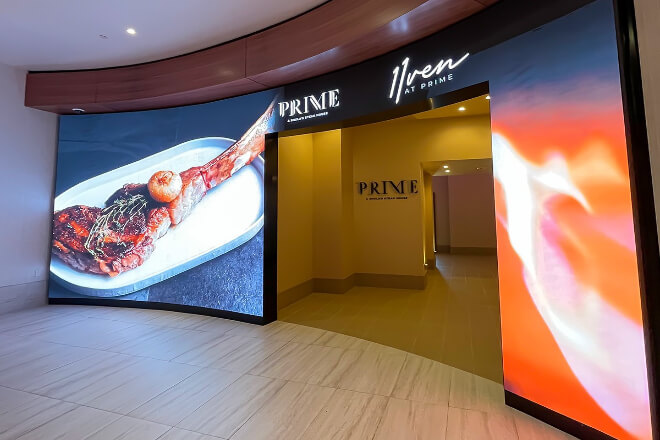
While professional testing equipment is expensive and complicated, the average buyer can also verify the accuracy of the test results by looking at a few key parameters.
And do some simple tests to preliminarily determine whether the LED screen supports true HDR.
1). Look at the parameters:
Before buying, you must ask clearly what the peak brightness of the screen is, preferably more than 1000 nits. If the brightness is too low, the HDR experience will be greatly diminished.
In addition, the color gamut coverage should be wide, generally to see whether it covers at least 90% of the Rec .
2020 or DCI-P3 color gamut, which ensures rich and natural colors. If the parameters given by the seller are vague or the numbers are low, you should be cautious.
2). Feel the picture changes by playing the HDR test videos
Find some HDR test videos publicly available on the Internet and connect them to the LED screen for playback. Ordinary buyers can compare the screen with HDR on and off.
After turning on HDR on a true HDR screen, the picture will be brighter, with stronger contrast, richer colors, and clearer dark details.
If there is no difference after turning it on or off, or the change is not obvious, it may be fake HDR.
3). Pay attention to color transition and color performance
In the test video, there is a picture with gradient colors. Observe whether the colors are smooth and natural, without obvious color bands or mutations.
True HDR supports 10-bit color depth and delicate color changes; if the color looks discontinuous or jumps, it means that the color depth may be insufficient.
4). Ask about the supported HDR standards
HDR has different standards, such as HDR10, HDR10+, Dolby Vision, etc. Buyers can directly ask the seller which standards are supported, the better, the better.
If the seller can’t answer or is vague, the screen may simply be “highlighted”.
5). Experience the performance in different brightness environments
Take the screen to different light environments for testing to see if the screen can still remain clear and bright under strong light, and whether the dark details can still be seen clearly.
True HDR screens have high brightness and strong contrast, and the performance will be significantly better when switching environments.
5. LED display promotional words and parameter traps that are easy to mislead

When buying LED screens, many promotions sound very tempting, but in fact, there are many pitfalls hidden in them.
Everyone should pay special attention to the following points that are easy to be misled:
1). “Supporting HDR content playback” does not mean that it can really display HDR
Many manufacturers like to use the phrase “supporting HDR content playback” to attract people.
But this actually only means that the screen can play video files in HDR format, not that it can really display the picture in the HDR standard.
In other words, the screen may just be an ordinary high-brightness screen, and the picture quality has not been substantially improved.
2). “Ultra-high brightness” does not mean HDR
High brightness is, of course, good, but many screens just blindly increase the brightness without optimizing the contrast and color depth.
Such screens are easy to be dazzling, and the picture level is poor, which cannot be compared with real HDR.
3). Be careful if only brightness is mentioned, but not color depth and contrast
If the manufacturer only promotes how bright the screen is, it avoids talking about color depth (such as whether it supports 10-bit color depth) and contrast (whether it is at the million level).
You have to be alert. Because these parameters are the key to determining the quality of the HDR experience, none of them can be missing.
6. Purchase advice: Which scenes must use true HDR LED display screens?

In fact, not all places have to use true HDR screens, but on some occasions, particularly high requirements for the picture make true HDR screens particularly important.
Like high-end exhibition halls and art exhibitions, everyone wants to see the most realistic and beautiful colors, and they are also very sensitive to details.
If you use ordinary screens, the colors may not be accurate enough, and the details are easy to lose, so you can’t show the original beauty of the work.
There are also smart conference rooms and film and television shooting sites, where the light and dark and details in the picture are particularly critical and cannot be sloppy.
The true HDR screen can ensure that the picture is rich in layers, and the light and dark are in place, so that it looks comfortable when meeting or shooting, and the effect is professional.
Finally, in the immersive experience area, such as a naked eye 3D or an XR experience area, the visual impact is super important.
The true HDR screen has more vivid colors, deeper blacks, and a more three-dimensional picture. Users can really feel the shock and reality when they enter.
Therefore, for scenes that require high quality, you must not save them on real HDR LED screens. The investment is worth the money, and the visual experience is better.
7. 結論
Choosing a real HDR LED display not only brings a clearer and more realistic visual experience, but also enhances the brand image and demonstrates professional strength.
最後に、LEDディスプレイについてもっと知りたい方は、 お問い合わせください.
